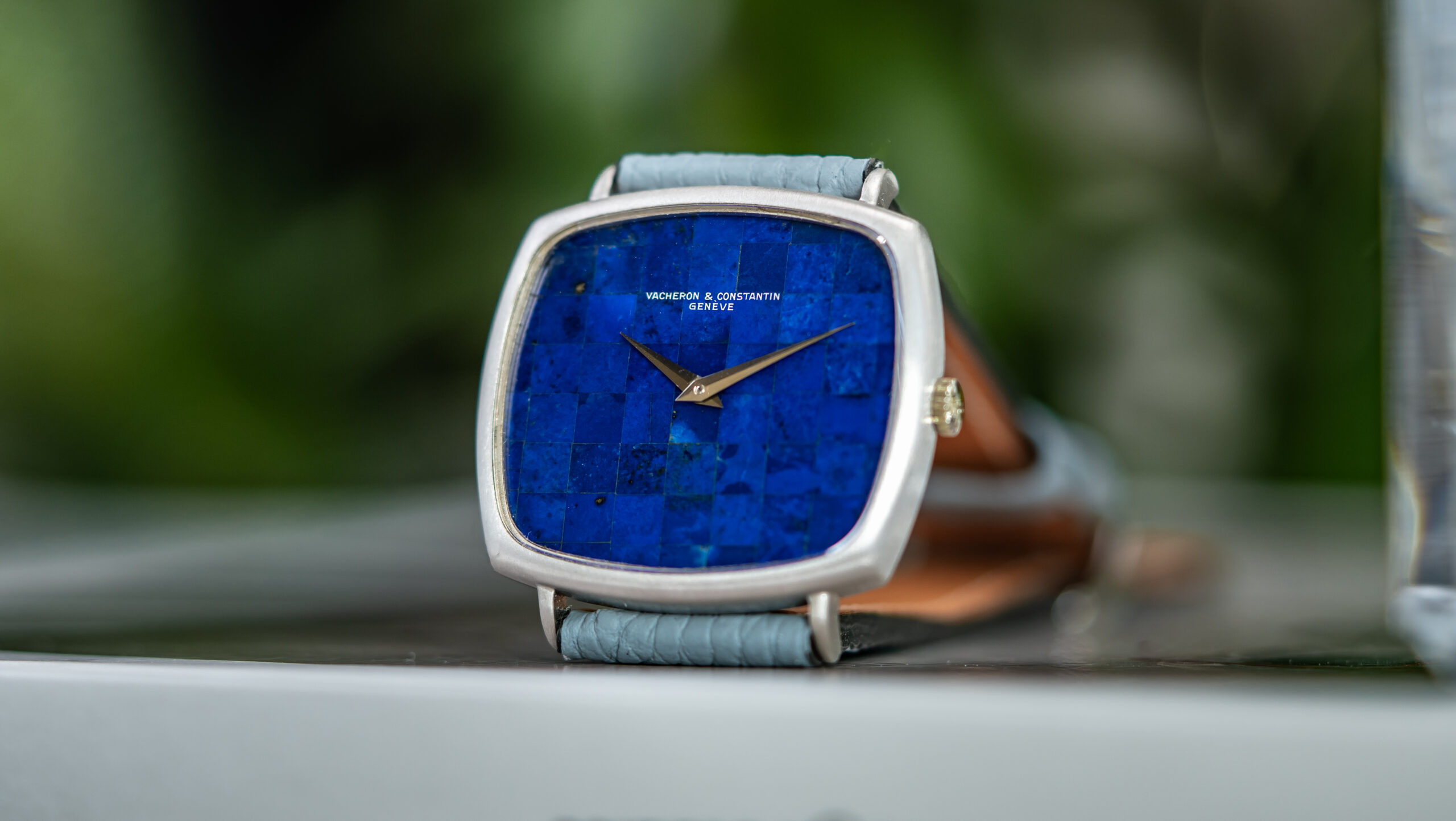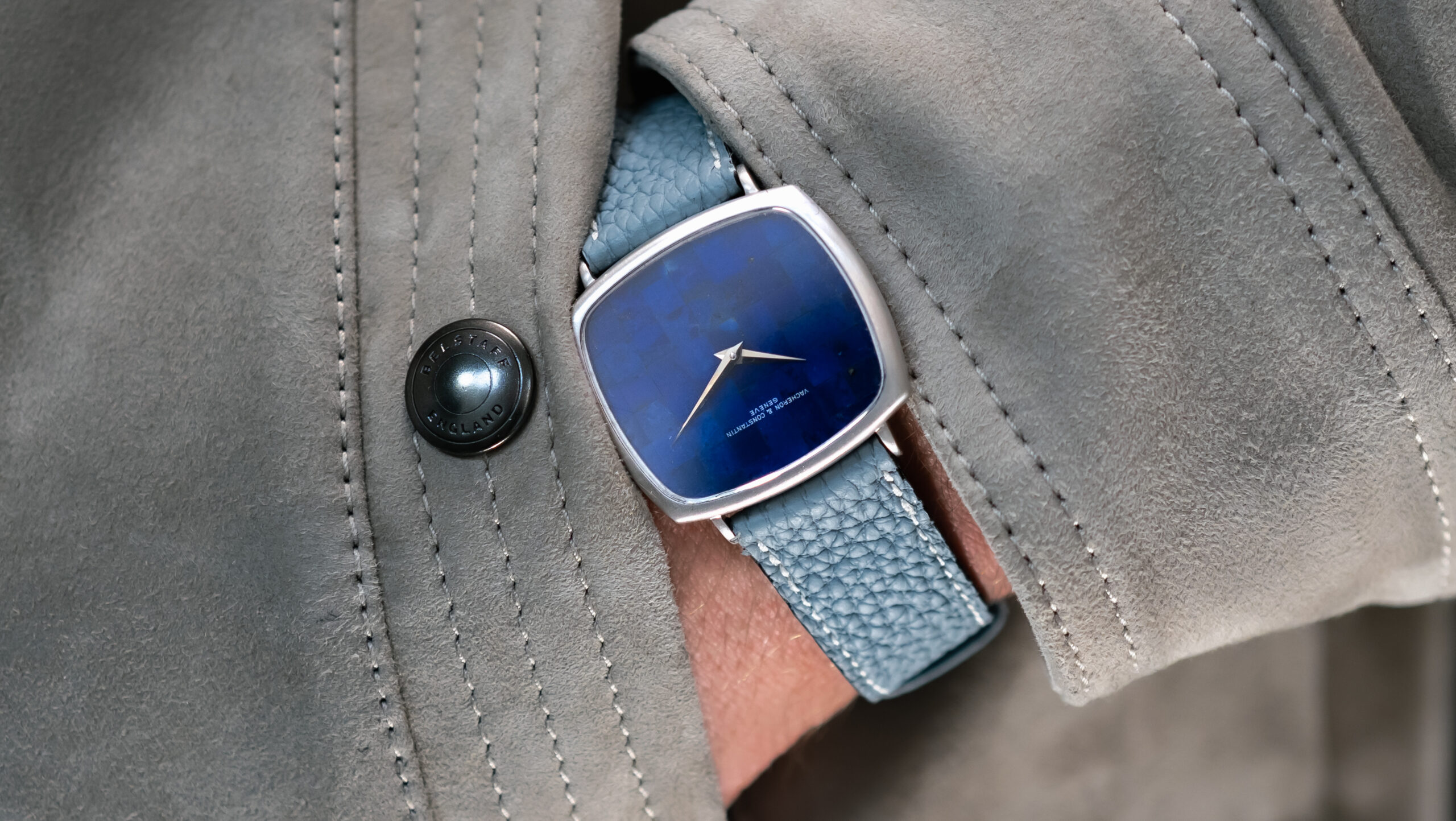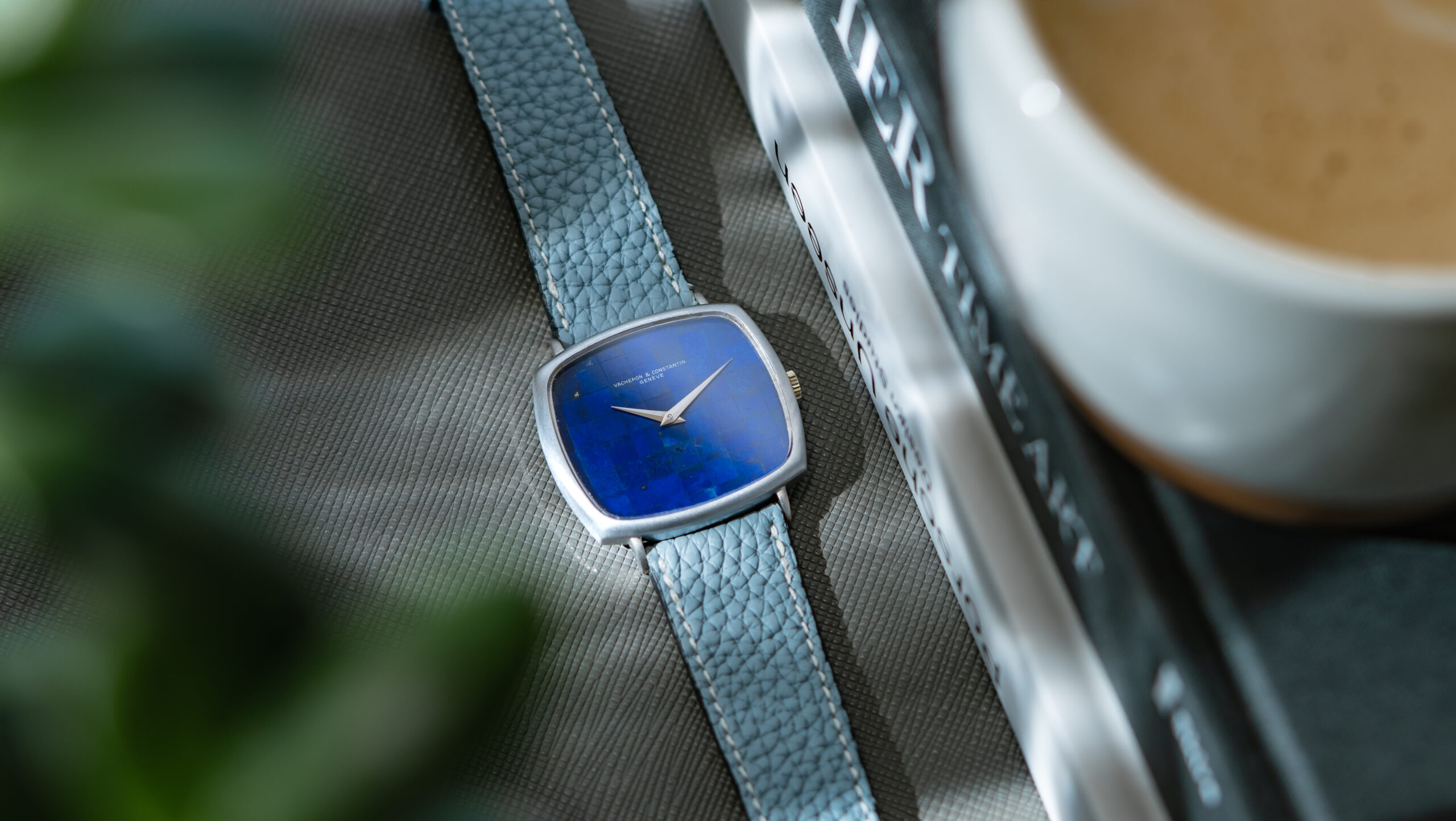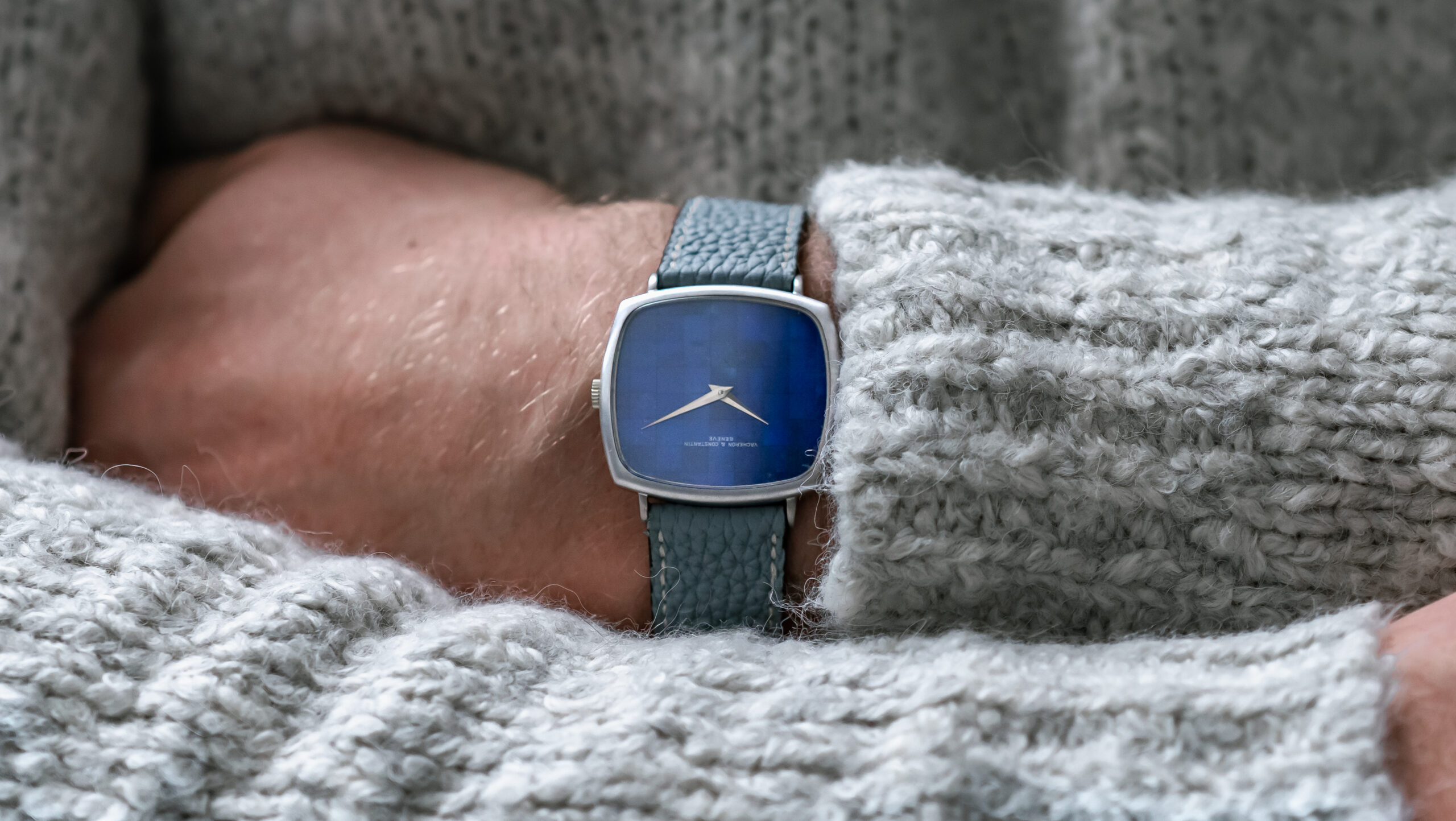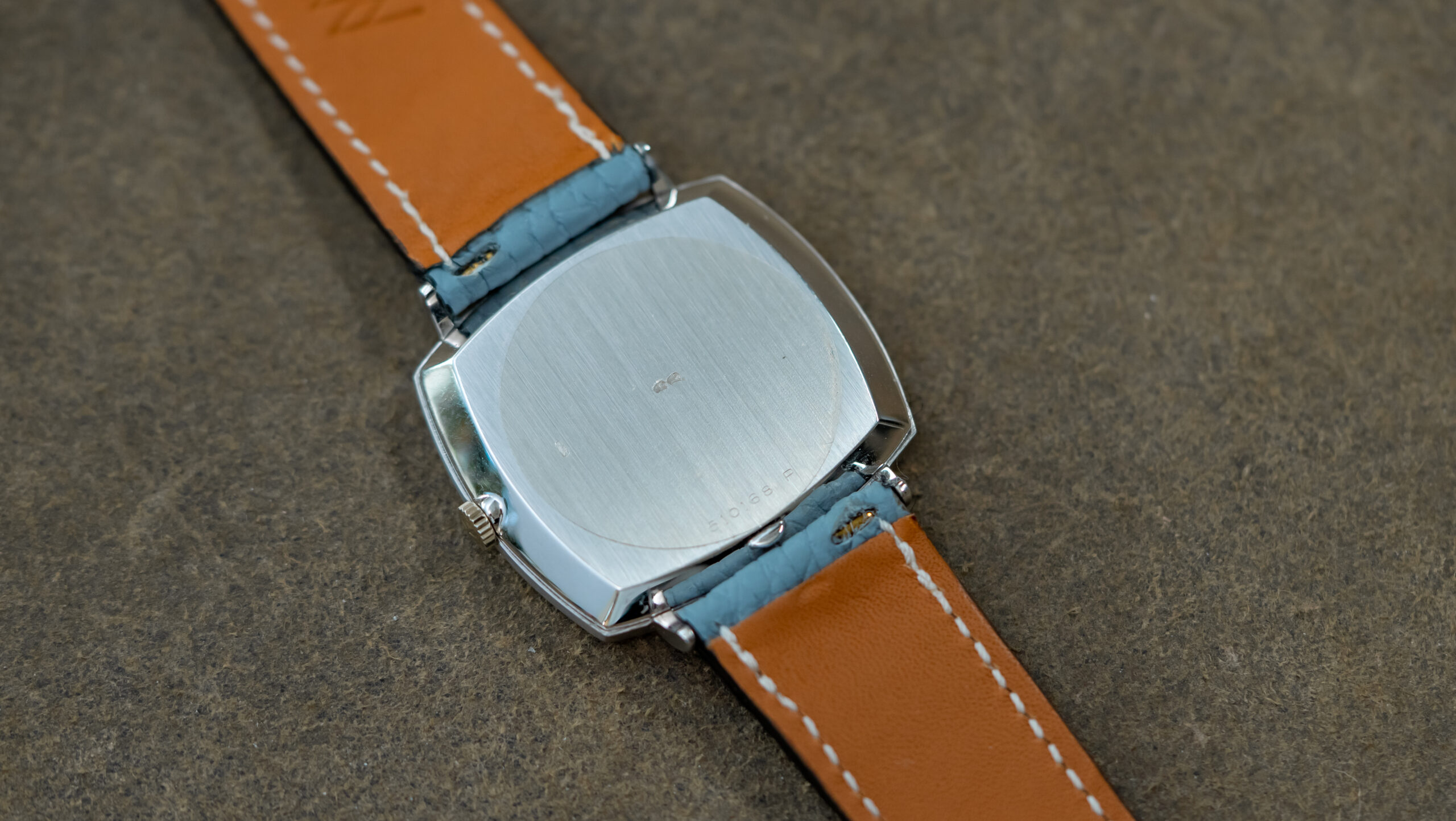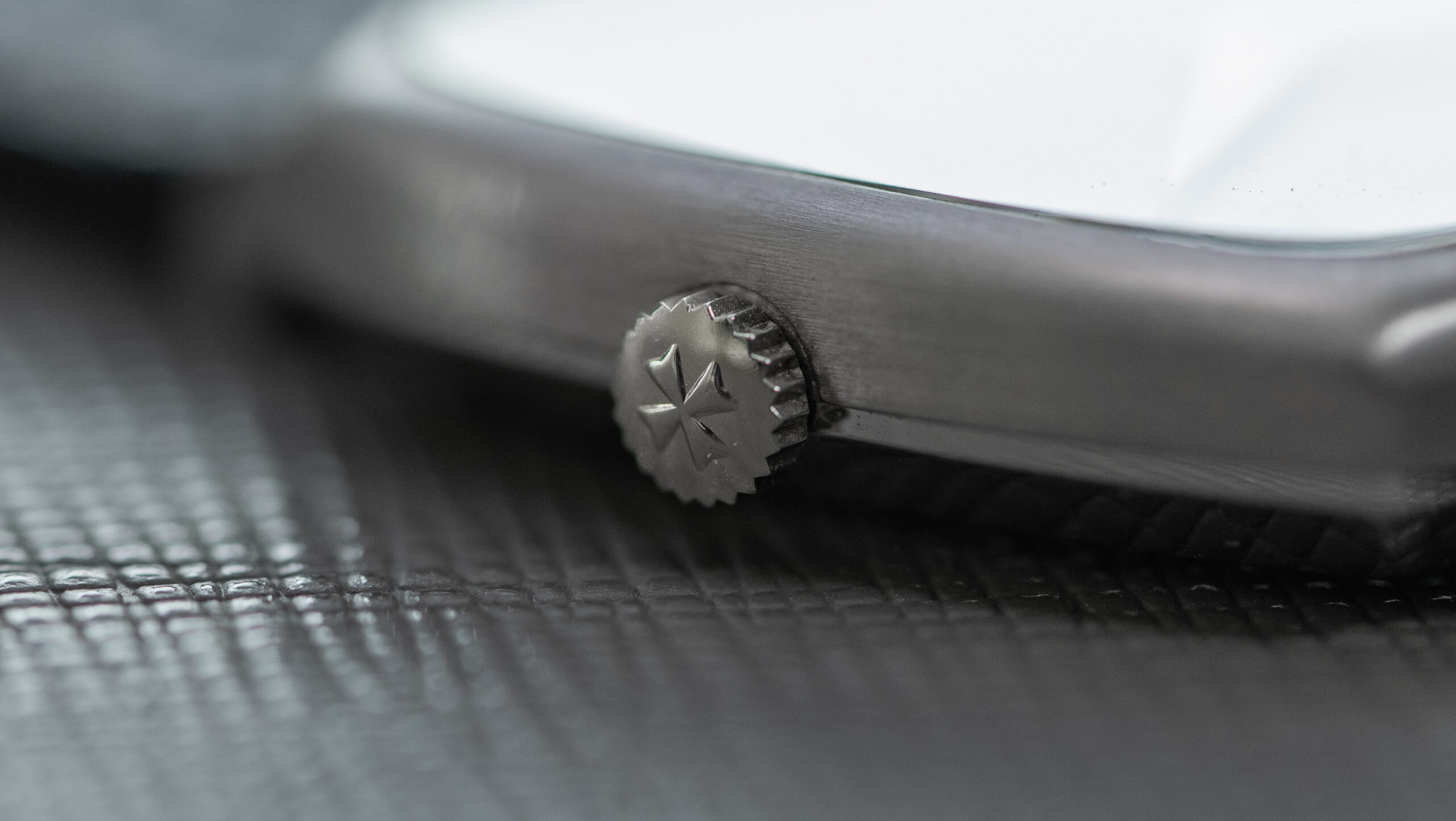The definition of a dress watch evolved considerably in the 1970s, largely in case design. Patek Philippe introduced the Ellipse in ’68 and it saw increasing success, evolving through many different shapes over the 70s which could be described as cushion, ellipse, or outright squares. Audemars Piguet got a bit experimental with their dress watches too, introducing octagonal and cushion ultra-flat case shapes such as the ref. 4010. Vacheron Constantin didn’t miss the party and, more than most, had a whole range of creatively inspired case shapes that fell into the elliptical, asymmetric, or cushion variety, under a bewildering amount of references. This is the ref. 2136, and it’s one of the most interesting we’ve seen from this time.
First there’s the shape, which has hard edges on the outer case lines contrasting rounded angles for the dial. It also sports aggressively downturned soldered lugs to help hug the wrist. Its 32x36.5mm 18k white gold case is brushed on every surface, which makes the white gold appear even more white-grey in tone than polished.
Mostly though, this watch is a standout for its dial. The dial is comprised of hand cut and applied square sections of lapis arranged in a mosaic pattern. The mosaic texture is really only visible in direct light, the stone naturally has a very slight variance in shade. Otherwise, it looks like a solid chunk of lapis at a glance. The 2136 is powered by Vacheron’s manual ultra-thin calibre K1014, based on the JLC calibre 818, which was only ever supplied to Vacheron and Audemars Piguet. It is finished in traditional Genevois style with Côtes de Genève, beveled edges, and perlage. This powered just two razor sharp, highly finished dauphine hands.
There are a handful of interesting Lapis dial Vacherons from this era which pop up every now and again, the range of case shapes and designs continually surprises. We often lament the same-ness of much of modern watch design, this era seemed like a break from uniformity to try something brave. The big three experimented with new shapes, asymmetry, and materials constantly. Not all were as successful as this 2136 feels five decades on, this is one of the most individual, bizarre, and lovely objects we’ve had the pleasure of handling from Vacheron.

